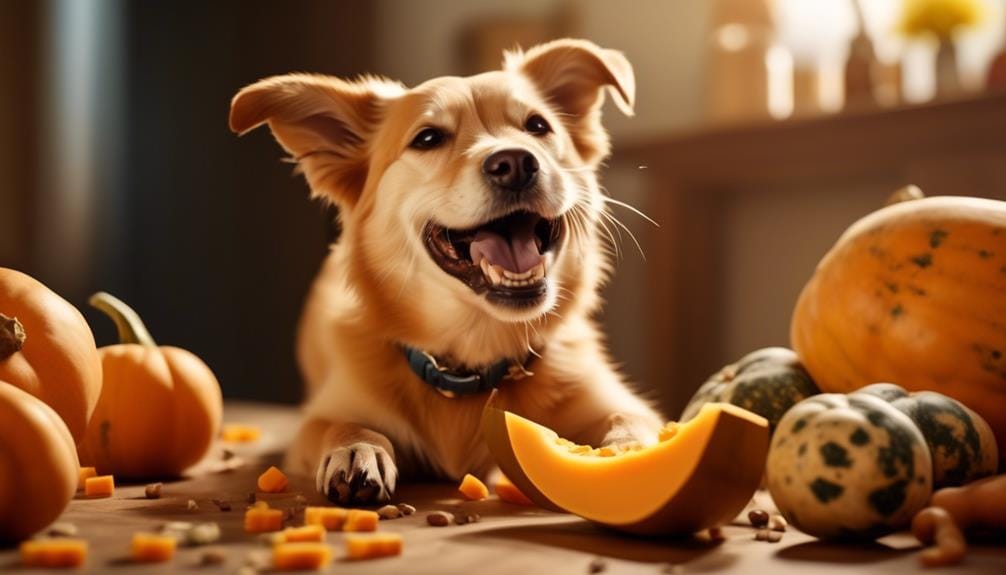The last thing any pet parent would want to think about, right? But trust me, there's more to that puddle than meets the eye. Dog urine color breakdown, believe it or not, is a tale as old as time. It offers a peek into a dog’s overall health, and sometimes, it’s the only sign you need to spot a brewing problem. So, let’s dive deep into the golden (or sometimes not-so-golden) world of dog urine and discover what pet owners really need to know.

Urine Color Meanings: The Basics
Ever noticed that some mornings, your dog's urine might be a deep yellow, and other times, almost clear? Well, just as our urine has stories to tell, so does theirs.
Clear to Light Yellow: This is what you're aiming for. It means your dog is well-hydrated and in tip-top shape. Think of it as your dog giving you a thumbs up, or in this case, a tail wag!
Dark Yellow to Amber: Hold on there! This signals dehydration. It's a prompt to ensure your pooch has access to plenty of fresh water.
Orange to Red: Alarms should be ringing! Blood could be present, or other severe conditions might be lurking. It's vet-time, pronto.
Brown or Dark Brown: This can indicate muscle breakdown or certain diseases. Don’t dilly dally; a vet visit is a must.
Green or Blue: Unusual, right? It could be a sign of rare genetic conditions or specific bacterial infections. Another one for the vet's list.
Common Dog Urinary Issues: Beyond the Color
Dog Urinary Tract Infections (UTIs)
Just as humans can suffer from UTIs, our fur buddies are no different. UTIs are painful infections that can change the urine's color and consistency. If your dog is urinating more frequently, having accidents inside, or if the urine looks cloudy or has an unusually strong odor, you might be dealing with a UTI.
Stones, Crystals, and Gravel
These aren’t treasures, unfortunately. Dogs can develop stones or crystals in their bladders. This can lead to bloody urine and is a significant cause of concern.
Other Indicators in Urine
Foamy urine? It could mean increased protein, indicating potential kidney problems. Cloudy urine can mean pus, representing infection.
Dog Kidney Health Signs: Beyond the Pee
Don’t just stop at the urine! Look for other signs. A dog that's excessively thirsty or producing an unusually high amount of urine can be signaling kidney problems. Weight loss, appetite changes, and bad breath (more than the usual dog breath) can also indicate kidney issues.
Monitoring Dog Hydration: The Essential Checklist
We've established that hydration plays a significant role in the dog urine color breakdown. But how do you ensure your pet is adequately hydrated?
- Always Keep Water Accessible: This might seem obvious, but sometimes, we might forget to refill the bowl. Ensure your dog has access to fresh water round the clock.
- Monitor Drinking Patterns: If your dog is drinking too much or too little, take note. It could be an early indicator of health problems.
- Check the Skin: A simple skin elasticity test can tell if your dog is dehydrated. Gently lift the skin on the back of their neck; if it doesn’t fall back quickly, you might have a hydration problem.
Remedies for Dog Urinary Problems: Home to Vet Solutions
Firstly, always consult your vet if you spot something amiss. However, for mild dehydration or to prevent urinary issues:
- Cranberry Supplements: These can be beneficial in preventing UTIs.
- Dietary Changes: Consult your vet about diets that can help if your dog has a history of urinary stones.
- Probiotics: A healthy gut can lead to a healthier urinary tract.
In conclusion, the dog urine color breakdown is a fascinating journey into the health and wellbeing of our beloved pets. While it might be something we often overlook, it’s crucial to stay informed. By understanding what different urine colors and patterns mean, you’re better equipped to ensure the long, happy, and healthy life of your canine friend. And remember, when in doubt, always seek a vet's advice. Your furry friend depends on you, after all!
The Importance of Routine Vet Checks
Even if you're now an expert in deciphering the dog urine color breakdown, it's essential to remember that it's just one piece of the puzzle. Regular vet checks are the cornerstone of keeping your furry companion in the best health possible.
Why Regular Vet Visits Matter
- Early Detection: Many health issues, even those not directly related to urine, can be detected early during routine check-ups. Early detection often leads to better outcomes.
- Vaccinations: Keeping up with your dog’s vaccination schedule ensures protection against various preventable diseases.
- Dental Health: Just like humans, dogs can have dental issues. Regular dental checks can prevent severe dental diseases and related complications.
- Dietary Recommendations: Your vet can provide advice on the best diet for your dog, especially if they have special needs or dietary restrictions.

Behavior Changes: Another Sign to Monitor
While we've focused on physical signs, behavioral changes can also indicate health problems in dogs. For instance:
- Lethargy or Decreased Activity: If your active pup suddenly prefers to lounge all day, there could be an underlying health concern.
- Increased Aggression or Fear: Sudden changes in temperament can be linked to pain or discomfort.
- Change in Eating Habits: Dogs that suddenly lose their appetite or start eating excessively might be signaling a health issue.
The Holistic Approach to Dog Health
Beyond the golden trails and telltale signs, holistic health for your furry buddy means adopting an approach that caters to their physical, emotional, and mental well-being. Let’s explore deeper.
Mental Health: Enrichment and Stimulation
Dogs are intelligent creatures with active minds. A stimulated dog is a happy dog.
- Toys and Puzzles: Engage your dog's problem-solving skills with toys designed to challenge them. Puzzle feeders, for instance, can turn mealtime into a fun brain activity.
- Training Sessions: Teaching your dog new tricks or commands can be mentally stimulating. Plus, it strengthens the bond between you two.
- Socialization: Regular playdates with other dogs can help keep your pup mentally and socially stimulated. Just ensure that the interactions are positive.
Emotional Health: Love, Bonding, and Security
- Regular Interaction: Dogs are pack animals and thrive on companionship. Regular playtime, cuddles, and even simple chats can make a world of difference to your pet's emotional health.
- Consistent Routines: Dogs find comfort in routines. Feeding, walks, and bedtime at consistent times can help them feel secure.
- Safe Spaces: Ensure your dog has a space they can retreat to when they need quiet time or feel overwhelmed. It could be a corner of the room, a kennel, or a favorite spot on the couch.
Physical Health: More than Just Walks
- Varied Exercise: Beyond the daily walk, consider activities like fetch, tug-of-war, or agility courses to keep your dog physically active and engaged.
- Dietary Health: Consult with your vet to ensure your dog is on the best diet for their age, breed, and health needs. Remember, just like the dog urine color breakdown, what goes in directly affects what comes out.
- Regular Grooming: Grooming isn’t just about aesthetics. It's also an opportunity to check for any external abnormalities, like lumps, ticks, or skin infections.
Prevention Over Cure
Though understanding signs like the dog urine color breakdown is invaluable, remember that prevention is always better than cure.
- Regular Health Screenings: Apart from routine check-ups, consider getting annual health screenings for your dog, especially as they age.
- Stay Informed: Continuously educate yourself about your dog’s breed, potential genetic health issues, and overall canine health trends.
- Invest in Pet Insurance: Consider getting pet insurance. It can help you be proactive about your dog’s health without the burden of hefty medical bills.

Understanding The Emotional Signals
Beyond the physical cues, your dog communicates a wealth of information through their emotions. Interpreting these can go a long way in preempting health or behavioral issues.
Reading the Tail Tales
- Wagging Tail: Generally associated with happiness and excitement. However, the height and speed of the wag can vary the meaning. A slow wag can sometimes indicate insecurity.
- Tucked Tail: This typically signals fear, submission, or anxiety. If your cheerful dog suddenly starts keeping its tail tucked for extended periods without any evident reason, it might be time to dig deeper into potential health or environmental causes.
- Stiff, Raised Tail: This can be a sign of alertness or potential aggression. If it's paired with other aggressive signs, caution is advised.
Eyes and Ears: Windows to Their Soul
- Whale Eyes (where the whites of their eyes are visible): Often indicates anxiety or stress. It can sometimes be a sign of pain or discomfort if accompanied by other symptoms.
- Perked Ears: Signals alertness. If the ears are forward, it can mean interest, while ears that are back might mean fear or submission.
Vocal Communications
Beyond the familiar barks and howls, dogs use a range of vocal signals.
- Whining or Whimpering: This can indicate pain, anxiety, or a desire for attention. Chronic whining, especially in older dogs, might signal more severe health issues.
- Growling: Often a warning. It’s essential to address the cause, especially if it becomes frequent and isn’t tied to play.
Environmental Factors and Their Impact
Just as our environment affects our health and well-being, the same goes for our pets.
- Safe Products: Be cautious about the cleaning products you use. Some may be harmful to dogs, affecting their health and changing their behavior.
- Stressful Situations: Moving homes, introducing new pets, or even changing your work schedule can stress your dog. Such stress can lead to both behavioral and health issues.
The Importance of Play and Interaction
While it's essential to monitor health indicators like the dog urine color breakdown, never underestimate the power of play.
- Interactive Toys: These can stimulate your dog’s mind, reduce anxiety, and offer a fun exercise.
- Training Sessions: They don't just teach obedience but also provide mental stimulation and strengthen your bond.
- Outdoor Activities: Hiking, beach trips, or simply playing fetch in the park can be incredibly beneficial for both you and your dog. The change in environment, new scents, and the physical activity can be rejuvenating.
The Evolution of Dog Care
In our ever-evolving world, understanding and catering to our dogs' needs has transformed over the years. It's not just about feeding and walking them anymore; it's about holistic well-being, mutual growth, and shared experiences.
Technology's Role in Modern Dog Care
In the age of smartphones and IoT (Internet of Things), even dog care hasn’t been left behind.
- Smart Collars: These can track your dog’s physical activity, monitor their heart rate, and even set up a virtual fence, alerting you if they wander too far.
- Pet Cameras: Gone are the days of wondering what your dog does when you're away. With pet cameras, not only can you monitor them, but you can also interact, dispense treats, and even play games.
- Health Apps: Apps that allow you to track everything from the dog urine color breakdown to vaccination schedules can be incredibly handy in managing and optimizing your dog’s health.
Dog Diets: The New Age Revolution
While kibble remains popular, there's been a marked shift towards more natural and varied diets for dogs.
- Raw Diets: Many believe that a raw diet, consisting of uncooked meats, bones, and vegetables, is more natural and nutritious for dogs. However, it's essential to ensure it’s balanced and safe.
- Homemade Meals: Some pet parents are opting to cook for their dogs, ensuring quality and avoiding additives and preservatives.
- Special Diet Foods: From grain-free to vegan, there's a rise in specialty dog foods catering to various health and ethical concerns.
The Rise of Doggy Mental Health Awareness
Just as human mental health is gaining the attention it deserves, so is our pets’.
- Dog Therapists: Yes, they exist! Specialists trained to address behavioral and emotional issues in dogs can be a boon for troubled pets.
- Dog Yoga & Meditation: While it might sound quirky, practices like "Doga" (yoga with dogs) can help calm anxious pets and strengthen the bond between the pet and the owner.

Creating Inclusive Spaces
Cities and communities are now more aware of the needs of dogs and their owners.
- Dog Parks: Spaces where dogs can run free, socialize, and play are becoming more common, allowing for better socialization and exercise.
- Pet-Friendly Establishments: More cafes, hotels, and public spaces are opening their doors to dogs, recognizing the close bond between pets and their owners.
Conclusion:
In our deep dive into the world of canine care, we've uncovered the importance of understanding physical signs, like the dog urine color breakdown, and the significance of emotional cues. With the aid of technology, from smart collars to health apps, modern dog care is becoming increasingly sophisticated. Dietary shifts, encompassing raw diets to homemade meals, reflect a move towards holistic health.
The rise of dog mental health awareness, through therapists and practices like "Doga," highlights our growing understanding of their emotional needs. As cities become more inclusive with dog parks and pet-friendly spaces, our bond with our furry companions only strengthens. This journey underscores the evolving, yet timeless, relationship between humans and their beloved dogs.
Frequently Asked Questions (FAQs)
- What does a clear to light yellow dog urine color indicate?
- A clear to light yellow hue typically suggests that your dog is well-hydrated and in optimal health. This color is generally what pet owners should aim for, as it indicates the kidneys are effectively filtering toxins.
- Why is my dog's urine dark yellow or amber?
- Dark yellow or amber urine can be a sign of dehydration or concentrated urine. It's essential to ensure your dog has constant access to fresh water and monitor if there are any other accompanying signs of illness.
- What should I do if my dog's urine is orange, red, or brown?
- Urine colors like orange, red, or brown can indicate the presence of blood, specific diseases, or muscle breakdown. Consult a vet immediately to address potential underlying issues.
- How can I tell if my dog has a urinary tract infection (UTI)?
- Signs of UTIs can include frequent urination, straining while urinating, cloudy urine, or unusually strong odors. Visible blood or discomfort might also be present. Immediate veterinary consultation is advised.
- Are there technological tools to monitor my dog's health?
- Absolutely! Modern dog care incorporates tools like smart collars for activity tracking, pet cameras for remote monitoring, and health apps to track vital stats, vaccination schedules, and more.
- How has dog diet evolved in recent times?
- Contemporary dog diets emphasize natural and wholesome nutrition. This includes raw diets, homemade meals, and specialized foods targeting specific health or ethical concerns, ensuring balanced and optimal nutrition.
- What is "Doga" and how does it benefit my pet?
- "Doga" is a blend of yoga with dogs. It offers relaxation, stress-relief, and bonding opportunities. For dogs, it can provide gentle stretching and calming sessions, beneficial for their emotional well-being.
- How can I ensure my dog's mental well-being?
- Mental well-being can be promoted through consistent interaction, stimulating toys and activities, maintaining routines, and consulting specialists or dog therapists for behavioral or emotional challenges.

